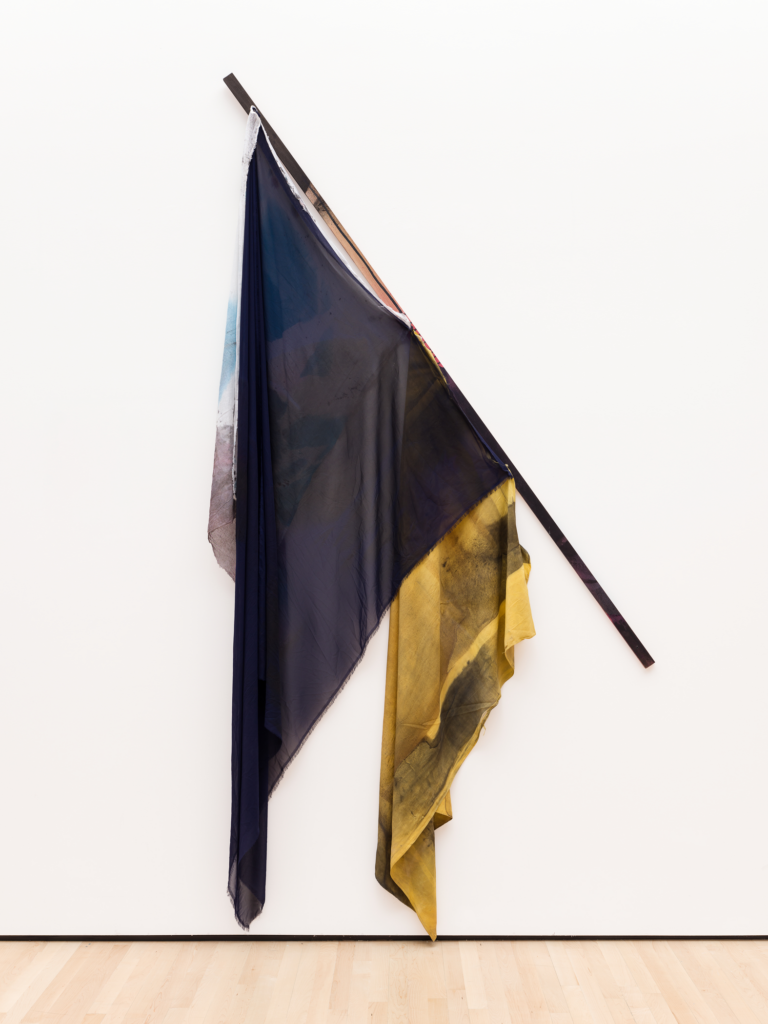
Erin O’Toole: I’ve heard you say that you work without preconceived ideas guiding what you create. Why do you resist ideas, and what do you do to prevent them from creeping into your practice?
Liam Everett: For years I was chasing ideas. Perhaps I wasn’t a Conceptual artist per se, but I was definitely cultivating ideas and then executing them. I found that I began to live in a vacuum in which perhaps the ideas were potent but the actions weren’t, because they were secondary.
I prevent ideas from creeping in by applying a series of flexible restrictions that are always changing. Originally the inspiration came from contemporary dance. There are moments in a performance when a dancer makes a movement, and if you’re watching carefully, you can see the intention of that movement and the action itself happening simultaneously. When the idea and the action are fused, a kind of power arises. This is exactly what I want to incite in the studio. I don’t want to be before the work; I don’t want to be after it. I want to be right up in it.
EOT: So it’s primarily a question of being present?
LE: Hyper-present. And I’m not a yogi, I’m not Zen, so I have to come up with these primitive regulations or restrictions. The irony is that out of this restrictive practice, a freedom rises up. And this can only happen when I am present. This immediate channel turns into what we might call, for lack of a better word, “pre-time.”
EOT: It’s interesting that you say you’re not a yogi because your practice seems analogous in some ways to yoga—you learn a series of poses, you do them over and over again, and through that practice you come to find nuance.
LE: I say I’m not a yogi because I don’t have a yoga practice, but the philosophy of yoga has had a huge effect on me. I find if I set up my practice in such a way that I’m using my body, a balance is achieved. If, for example, I put a steel fence between myself and a painting, I can’t simply think through it. I have to physically push through it. It calls up this other way of seeing, one that is directed by the body. And I feel that if I don’t set up a practice that calls for this kind of labor-intensive process, that other way of seeing becomes dormant. When one engages “body-seeing,” one invites the potential of being seen by the world, which can be incredibly powerful and frightening.
EOT: I think a lot of people have trouble being present these days. It’s part of the current condition: with so much of our lives conducted virtually, people feel a little disembodied and less present. Do you feel like you’re reacting against that, specifically?
LE: Absolutely. Not that I saw this coming, but I’ve been reacting against it, I feel, my whole life. When you asked that question you were actually being a little light on it, because I don’t think we are a little bit not here; I think we are not at all here. This is not a defect—it is now an integrated part of our existence. We’re ahead, or at the very least we’re elsewhere. My practice is a reaction to this condition.
EOT: You’ve said that you make several paintings at once and that each is composed of many layers. What is your process for building them up?
LE: I don’t allow myself to work on one piece at a time because if I do, I start moving into a concept-based formula in which my actions are always lagging behind ideas. The layering has nothing to do with process. It is actually staked in a practice related to rehearsal. I want to recognize the presence of repetition, to witness a series of returns. I’m rehearsing and redoing until I don’t see where I’m going with the work or until I’m confronted with something that is uncomfortable, something other, something that can only be inherent to the work itself. It is not motivated by a visual or formal interest. Instead my intention is to incite a mood, a kind of physical-emotional state that is almost overwhelming or destabilizing.
EOT: Whereas yogis do their asanas over and over again, without striving toward an end, you are making paintings that eventually go out into the world. Even if you are not consciously working toward the idea of completion, you do stop working at a certain point. How do you know when to stop?
LE: I don’t want to move toward completion or conclusion. I stop when I don’t recognize the work or, rather, when I don’t recognize myself in it. Ideally there is a confrontation that arises, a point when the work confronts me, refuses me, and appears to be questioning my very presence in the studio.
EOT: When you’re thinking about an installation that will exist in a specific place for a particular period of time, and your practice is ultimately about working against completeness and conclusive statements, how do you create an installation that is open enough for you?
LE: I ask myself this question all the time. If I had an answer for it, I would probably stop practicing. This question is at the bottom of every project. What I try to do is look for other questions as a response. If I can respond with more questions to that kind of pivotal concern, it becomes even more exciting, daunting, challenging, and intimate.
Excerpted from an interview conducted at Liam Everett’s studio in Sebastopol, California, on February 3, 2017. Originally published in Jenny Gheith and Erin O’Toole, eds., 2017 SECA Art Award: Alicia McCarthy, Lindsey White, Liam Everett, K.r.m. Mooney, Sean McFarland (San Francisco: San Francisco Museum of Modern Art, 2017).